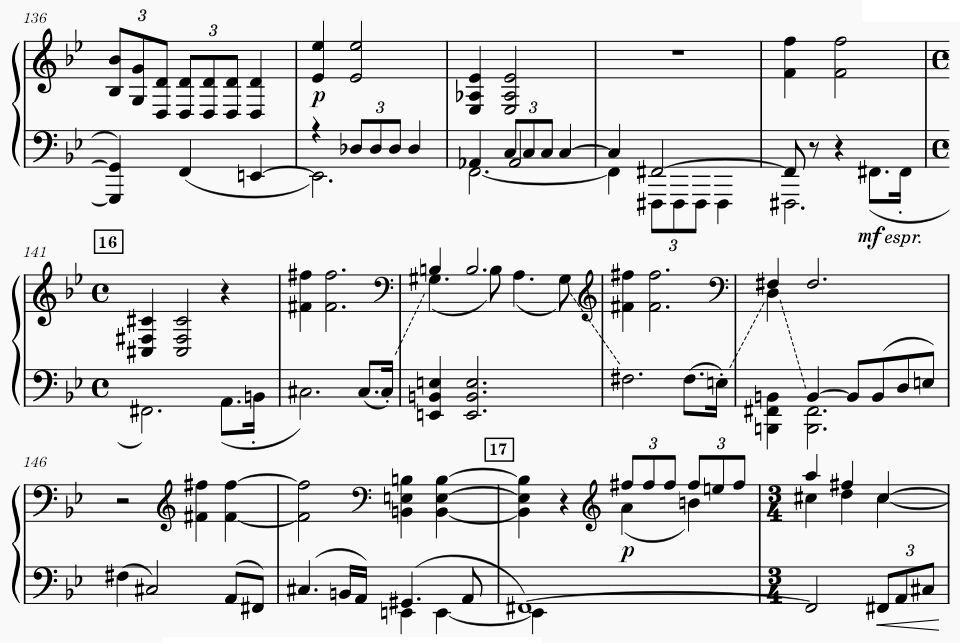I'm arranging an orchestral piece for solo piano, and find myself transcribing a passage with a single melodic line in the lower register, which to play on piano should alternate between the left and right hands. In the original score, this is a cello solist, and everything else is pianissimo brass (a repeating pattern; octaves in the upper register is trumpet, fifths in the bottom is trombone/tuba). Here's the current draft:
𝅘𝅥=66, this is a gentle section that no pianist should have trouble performing. My only consideration right now is really selling that independent melodic line (ms. 140 to 148) in this already-busy score. The entire piece is also quite long; so I want to facilitate sight-reading. It should be clear at a glance where the independent melody starts, and where it ends (that triplet in the last measure is no longer part of it).
Options I have considered:
- Making every other note small. It feels like a nuclear option that'd upset the entire alignment of this section, and it would be unclear where it should end.
- Slurring everything together. I would need nested slurs.
- Identifying every source instrument; so notating vc in small block letters every other measure, tpt, tbn+tba for the chords.
- Putting the cello on a third stave in the middle, notating where it should be left hand or right hand. Then I just feel presumptuous xD


